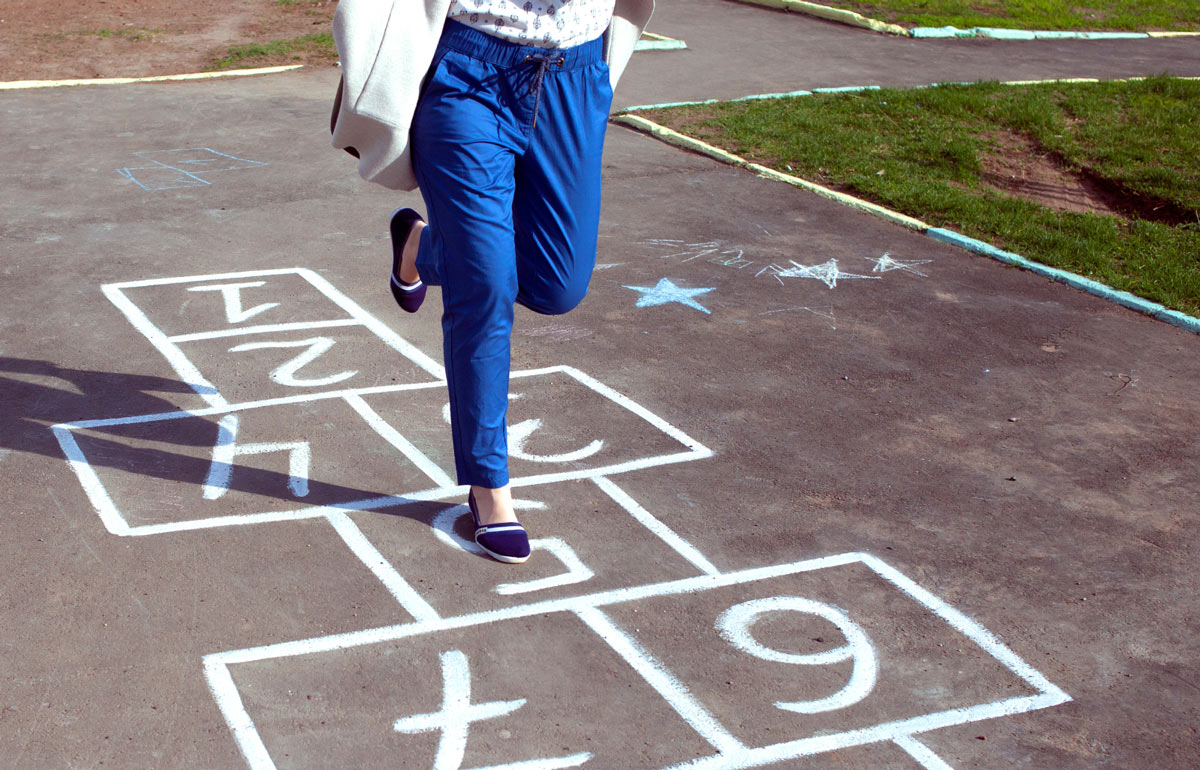When was the last time you made your way through a hopscotch? Been a few years? You wouldn’t be alone. As we grow up, we tend to leave the sidewalk chalk behind and, unfortunately, lose some of the great benefits that come from this childhood game.
An activity like hopscotch requires great agility. Agility is defined as the ability to move quickly and easily. It is a skill that we regularly rely on in everyday activities to react to our surroundings. It is what allows us to adjust quickly if a dog or child cuts off our path unexpectedly while we’re walking and what helps us move around the pickleball or tennis court to make the next shot.
In our youth, we hone our agility skills through games like hopscotch, tag and practice drills in organized sports. However, as we move into adulthood, we do fewer activities that specifically train this system of reactivity. Unfortunately, as we age there are normal changes in our muscles, joints and brains that tend to slow down our reactivity making us less agile.
The good news is that by returning to some simple drills, we can regain and maintain better agility. This can help keep us moving more comfortably, confidently and safely in everyday activities and improve sport performance for activities like tennis, pickleball and hockey.
One of my favourite tools to use in my physiotherapy practice to help clients with agility is the agility ladder. This ladder can be laid out on any flat surface and creates a grid on the floor. There are many stepping patterns that can be done to make your way up and down the ladder. These patterns include forward, sideways and backward steps. While completing these stepping patterns, there is a focus on precision and speed.
Precision is always the first goal. Once someone has the stepping pattern figured out, I encourage them to do it as quickly as possible. This inevitably leads to mistakes, which is perfect. I always say, “The benefit is in the failure.” When you make a mistake, your brain will quickly realize it and try to change it. These quick adjustments are just the kind of agility response we are trying to train.
You can easily create your own agility ladder using chalk outside, painter’s tape on your floor or even by following the pattern on your flooring at home. Here are two of my favourite starter patterns for agility ladders:
Quick 2-Step
Step each foot as quickly as possible into each space on the ladder, always leading with the same foot. Repeat with the other foot leading.
Ins And outs
Step forward into the first space with both feet, then step each foot to the outside of the ladder. Step forward into the next space with each foot and repeat.
Of course, safety during this work is important, so ensure you check in with your physiotherapist for the stepping patterns that are best suited to you.
Book an assessment with Zoomers
Use our online booking tool to find a time that works for you!


